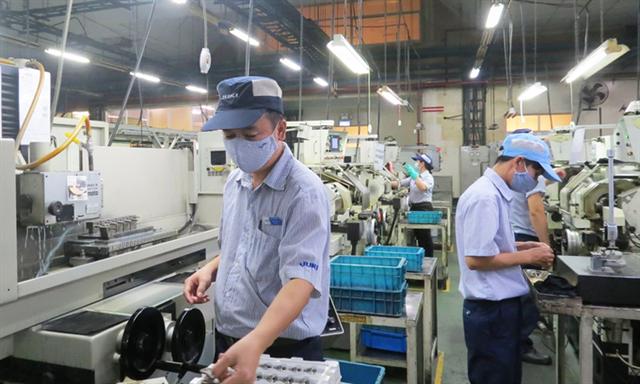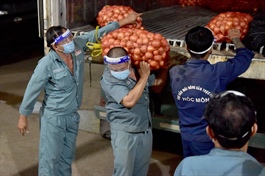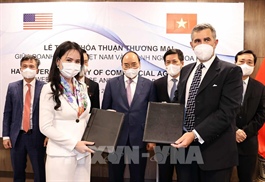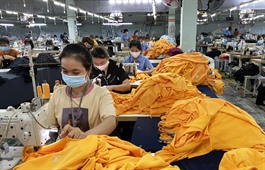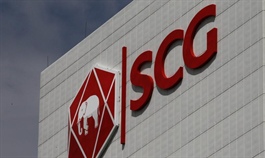HCMC ‘four green’ scheme to reopen impracticable, say factories
HCMC ‘four green’ scheme to reopen impracticable, say factories
Production facilities in HCMC are struggling to meet the stringent new reopening conditions related to Covid infections and commuting.
Workers make products in a factory of Juki Vietnam in Ho Chi Minh City. Photo by VnExpress/Le Tuyet
|
Sewing machine producer Juki Vietnam in District 7 is allowed to increase its workforce ratio from the earlier 30 percent to 50 percent if it complies with the new ‘four green’ scheme, but the management says this increase is unsustainable.
"Workers can commute to work if they live in a green zone, but their area could turn into a red zone since the city is doing widespread testing through this month," administrative director Dao Quoc Cuong pointed out.
Green zones are those authorities deem safe from Covid, while other colors, rising to red, indicate various degrees of contagion risk.
The green living zone requirement is one of the four for a company to resume operations in Districts 7 and Cu Chi, and replaces the stay-at-work model.
The other three requirements are green workers (workers should have Covid-19 green cards and test negative), green route (workers should travel to the factory on a single designated route without stopping) and green manufacturing zone (factory should recorded no new cases in the last seven days and has to test employees every five days).
Cuong said the new scheme requires his factory to divide workers’ eating area into two, one for those under the stay-at-work model and the other for the new four-green workers.
The requirement of not having new Covid cases in the past seven days is also difficult to meet since the pandemic situation in the city remains difficult, he said.
The goal of reviving manufacturing would therefore not be achieved in the short term, he said.
Japanese company Furukawa Automotive Parts Vietnam has for the last five days been struggling to submit its 4,000 employees’ Covid-related data to city authorities for the issuance of green cards.
The company has a large number ofemployees and so the likelihood of having Covid cases is much higher than at smaller firms, making it difficult to fulfill the seven-day no-infection requirement, Hoang Xuan Thai, its labor union chairman, said.
"This policy should be changed to make it a ratio of a company’s total number of workers since it is not possible to have zero cases".
In Cu Chi District where things are starting to open up, pliers maker Kem Nghia is in the process of getting green cards for over 900 fully vaccinatedemployees.
But its CEO, Tran Minh Tu, is not sure his workers will be able to commute to work if they have to pass through red and orange zones.
"There needs to be more detailed guidelines."
In HCMC’s 17 industrial hubs, just over half of the nearly 1,600 companies have shut down leaving 245,000 of their over 320,000 workers unemployed.
Those that continue to operate face difficulties, Nguyen Van Be, chairman of the Ho Chi Minh City Export Processing Zone and Industrial Park Authority Business Association (HBA), said.
"Authorities want to impose the highest level of control but they need to consider the capability of factories to meet those requirements."
Covid testing is a severe financial burden on companies, costing billions of dong every day (VND1 billion = $43,890), and less testing should be required now since many people have been vaccinated, he said.
Cuong of Juki said since Covid infections are unavoidable, factories should be allowed to operate normally closing the infected areas.
"The severity of Covid-19 is lower in people who are fully vaccinated and so restrictions should be relaxed; otherwise both businesses and workers will be in deep trouble."
HCMC has around 1.2 million factory workers of whom nearly 14,000 were staying on site on Sep. 15.
The city had over 6,500 new Covid cases Tuesday, up from 5,400 the previous day.


